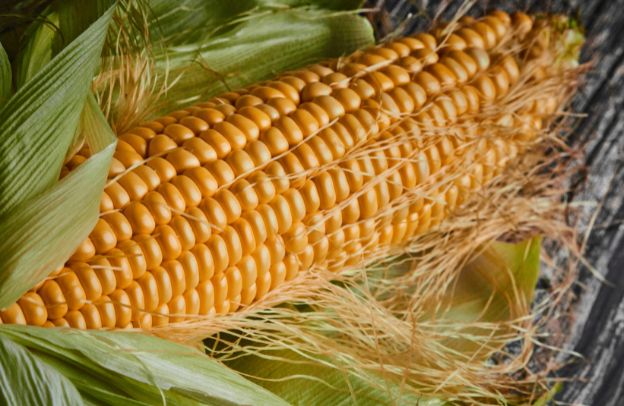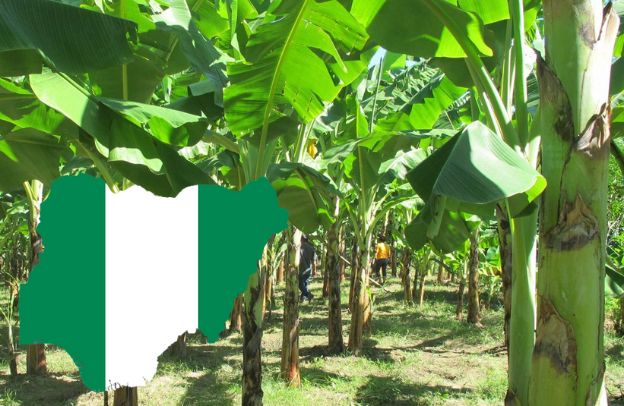Unlocking the Gold of the Tropics: Seven Corn Varieties Transforming Nigeria’s Agribusiness Landscape

Have you ever considered that the solution to food insecurity, job creation, and Africa’s economic renaissance could lie in something as humble as a kernel of corn? As an entrepreneur from the African diaspora, the untapped potential of Nigerian agriculture, particularly in maize production, offers you a unique opportunity to drive change and prosperity both locally and globally. This isn’t just about farming it’s about transforming lives, businesses, and economies.
Learn How to Leverage Your Story through our Story To Asset Transformation (S.A.T) Framework.
Corn, or maize, is more than a staple food; it’s an agricultural powerhouse that fuels industries, feeds nations and connects continents.
In Nigeria, maize is the second most cultivated crop, contributing significantly to both food security and the economy. Yet, the potential of this golden grain remains underexplored, especially when you consider its diverse varieties and applications.
This article introduces you to the seven most impactful corn varieties and explains how they can serve as a cornerstone for your agribusiness endeavors. From creating job opportunities to addressing food insecurity, maize is your gateway to making a tangible impact in Nigeria and beyond. Let’s explore the possibilities.
Why Corn is Critical to Africa’s Agricultural Future
In sub-Saharan Africa, agriculture accounts for 23% of GDP and employs over 60% of the workforce. Within this sector, maize plays a pivotal role. Nigeria alone produces over 10 million metric tons of maize annually, making it the largest producer in Africa.
Despite this, the country still imports processed maize products, presenting a clear opportunity for entrepreneurs to bridge the gap between local production and industrial processing.
Maize is not just food; it’s fuel for economies. It serves as the raw material for industries producing flour, animal feed, biofuels, and even pharmaceuticals. In a world grappling with climate change and food insecurity, maize stands out as a resilient crop capable of thriving in Nigeria’s tropical climate.
For entrepreneurs in the African diaspora, this represents a chance to invest in a product with high demand and versatile applications.
The 7 Varieties of Corn You Should Know
Here are the 7 corn varieties you should be aware of.
1. Dent Corn
Dent corn, commonly called field corn, is a workhorse in agriculture. It gets its name from the indentation on each kernel that forms as the corn dries. Dent corn is rich in starch and is used extensively in producing livestock feed, ethanol, cornmeal, and industrial products like adhesives.
For entrepreneurs, dent corn offers scalability. With proper mechanization and storage, you can produce large quantities to supply both domestic and international markets. Nigeria’s growing livestock industry presents a ready market for dent corn as animal feed.
2. Heirloom Popcorn
Popcorn isn’t just a snack; it’s a premium product with growing demand in urban and international markets. Heirloom popcorn varieties, cherished for their rich flavor and historical significance, are particularly appealing to health-conscious and gourmet consumers.
As an African diaspora entrepreneur, you can tap into this niche by cultivating heirloom popcorn and marketing it as an organic or heritage product. Think of the export potential, packaged popcorn branded as “Proudly Nigerian” could become a favorite in overseas markets.
3. Robust Yellow Hulless Hybrid
This hybrid variety is designed for superior popping quality, making it a favorite among popcorn enthusiasts. Its thin hulls and tender kernels ensure a delightful snacking experience.
For you, this variety represents an opportunity to differentiate your product in the competitive popcorn market.
4. Baby Corn
Baby corn, harvested before maturity, is a staple in gourmet cooking and stir-fry dishes. Its versatility and aesthetic appeal make it popular in high-end restaurants and urban households.
Cultivating baby corn allows you to target Nigeria’s growing urban middle class and the hospitality industry. Additionally, exporting baby corn to markets in Europe and the United States could offer lucrative returns.
5. Flour Corn
Flour corn, with its soft starchy endosperm, is ideal for milling into cornmeal and flour. It is commonly used in baking and traditional dishes. Given the popularity of maize-based foods like pap, tuwo, and maize bread in Nigeria, flour corn is a staple with consistent demand.
For entrepreneurs, processing flour corn into branded maize flour products offers an avenue for value addition. This can be achieved through partnerships with local milling companies or the establishment of your own processing facility.
6. Sweet Corn
Sweet corn is prized for its high sugar content and tender kernels. It is often consumed fresh, canned, or frozen. In Nigeria, sweet corn has growing popularity among urban consumers, making it a profitable venture for agribusiness.
Investing in sweet corn cultivation and processing can open doors to supplying supermarkets, restaurants, and export markets. With proper branding and packaging, your sweet corn products could command premium prices.
7. Waxy Corn
Waxy corn, known for its sticky texture, is rich in amylopectin and has unique industrial applications. It is used in producing adhesives, food thickeners, and pharmaceuticals.
By investing in waxy corn cultivation, you position yourself in a niche market with industrial clients. Collaborations with pharmaceutical and food companies could ensure consistent demand for this specialty crop.
Building a Sustainable Agribusiness Model
One key to success in maize farming is adopting modern techniques like precision agriculture, mechanization, and improved irrigation systems. According to the FAO, utilizing efficient irrigation methods can double maize yields in sub-Saharan Africa, a region where rain-fed agriculture dominates.
- Processing for Value Addition: Processing maize into products like flour, starch, and ethanol significantly increases its market value. The Nigerian government’s focus on reducing food imports provides a supportive policy environment for entrepreneurs investing in local processing facilities.
- Leverage Technology for Market Access: Digital platforms can connect you with buyers, suppliers, and investors. For example, Farmcrowdy, a Nigerian agri-tech platform, allows diaspora investors to fund agricultural projects and share in the profits. Such platforms make it easier to scale your agribusiness and reach global markets.
- The Role of the African Diaspora in Transforming Agriculture: The African diaspora, with its access to resources, skills, and networks, is uniquely positioned to drive agricultural transformation in Nigeria. By investing in maize production and processing, you can create jobs, enhance food security, and build sustainable supply chains.
- Addressing Food Insecurity: Maize’s versatility makes it a key player in tackling food insecurity. From providing affordable food to supplying animal feed for protein production, maize impacts every level of the food chain.
- Creating Economic Opportunities: According to the World Bank, Nigeria needs to create 30 million jobs by 2030 to address unemployment. Agribusiness, particularly maize cultivation and processing.
According to the World Bank, Nigeria needs to create 30 million jobs by 2030 to address unemployment.
Agribusiness, particularly maize cultivation and processing, is uniquely positioned to contribute to this goal. By investing in modern maize farming and value-added processing, you can generate employment opportunities across the supply chain, from farmers and laborers to transporters and marketers.
Moreover, the spillover effects of investing in maize are profound. For instance, setting up a maize processing facility not only creates jobs but also empowers smallholder farmers who can supply the raw materials.
This creates a ripple effect, boosting local economies and fostering community development.
Why Now Is the Right Time to Invest in Nigerian Agriculture
Nigeria is on the cusp of an agricultural revolution, driven by government policies, technological advancements, and a growing middle class.
The Nigerian government has prioritized agriculture as a key sector for economic diversification, offering incentives such as tax holidays, grants, and low-interest loans to agribusiness investors.
Additionally, the global demand for maize and maize-derived products continues to rise. According to the Food and Agriculture Organization (FAO), global maize production is expected to grow by 3% annually, with sub-Saharan Africa contributing significantly to this growth. As a diaspora entrepreneur, you can leverage this trend to position yourself as a leader in maize production and processing.
Practical Steps to Get Started
Understand the demand for maize varieties in your target market. For example, urban consumers may prefer sweet corn and baby corn, while industrial clients might need dent or waxy corn.
- Identify Strategic Partnerships: Collaborate with local farmers, cooperatives, and agri-tech companies. Platforms like Farmcrowdy and ThriveAgric can help you connect with reliable partners.
- Invest in Quality Inputs: Use certified seeds, fertilizers, and modern farming equipment to maximize yields. The Alliance for a Green Revolution in Africa (AGRA) offers resources and training for farmers looking to scale their operations.
- Explore Financing Options: Leverage grants, loans, and diaspora investment platforms to secure funding. The Central Bank of Nigeria’s Anchor Borrowers’ Program is an excellent resource for agribusiness financing.
- Focus on Sustainability: Adopt eco-friendly practices such as organic farming, renewable energy, and waste recycling. Sustainable practices not only protect the environment but also appeal to socially conscious consumers and investors.
See also: How to make a corn-based bioplastic
Conclusion: Seizing the Opportunity
Nigeria’s agricultural sector, particularly maize, is brimming with untapped potential. As an entrepreneur from the African diaspora, you have the resources, networks, and vision to transform this potential into reality.
The time to act is now. By cultivating one or more of the seven maize varieties discussed in this article, you can tap into local and global markets, create employment opportunities, and help address food insecurity.
Whether you’re producing dent corn for livestock feed, sweet corn for urban households, or heirloom popcorn for export, the possibilities are endless.
In this journey, you’re not just an entrepreneur, you’re a changemaker. Your investments in Nigerian agriculture can shape the future, bringing prosperity to communities and pride to the African continent. So, take the leap, plant the seeds, and watch as your agribusiness dreams grow into a legacy of impact and success.
Learn How to Leverage Your Story through our Story To Asset Transformation (S.A.T) Framework.





